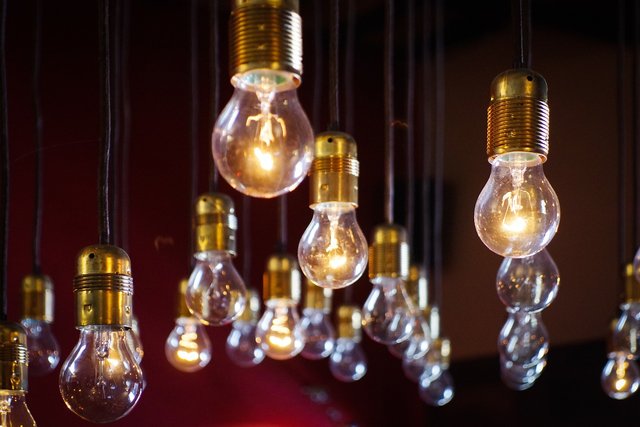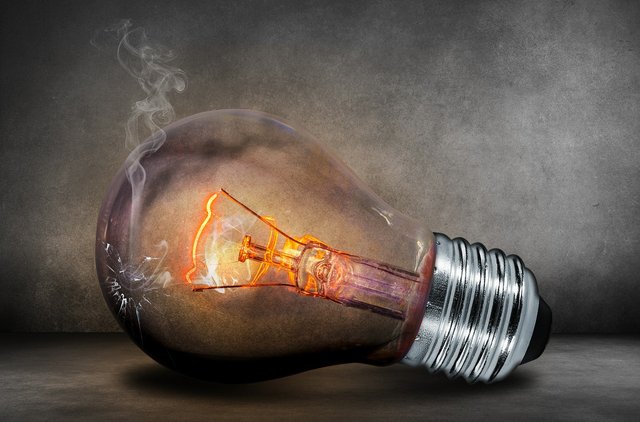Understanding Why Incandescent Lights Get So Hot And Waste So Much Energy
In life, one day of comfort makes people forget decades of agony and lack. That's how humans are. It is one of the fundamental attributes of man. And this attribute is very obvious in all endeavors where sons of men have interests. Can one fathom the depth of joy the very first practical electric lamp would have heralded in the hearts of men towards the end of the 19th century when they realized that, for the first time since evolution, man would no longer depend solely on burning of candles and using gas lamps for illunination like they had been doing since who-knows-when? If not for the shortness of man's memory, tell me why the incandescent lamps which had previously been praised as being among the greatest inventions of all time, are today getting bad press coverage because they waste so much energy? But then people may be right in their current stance about incandescent lamps. Are they really right? We will find out shortly.
However, irrespective of the point this intro seeks to make, this article is not an argument for or against incandescent lamps but an attempt to examine the science behind this revolutionary invention for educational purposes. In this regard, it would attempt to provide a scientific response to such puzzling phenomenon as to "why hot things give off light", the answer of which happens to be the underlying principle behind Thomas Edison's incandescent lamp, among other things. From time immemorial, we have known that hot things give off light. For instance, if fire is set on a bunch of logs, it will give off a nice red glow as well as a feeling of warm to any human being hanging around. This is true since man's discovery of fire; but the why do hot things give of fire? Any reason for that? Things burn via a chemical reaction known as combustion during which a fuel, like the wood in the logs, combines with the atmospheric oxygen to give carbon monoxide gas, water as steam and a lot of energy. Some of this energy that is given out are in the form of heat, light and to a lesser extent sound (via the cracking and hissing of the logs). Generally, hot things will always give off light when their atoms get excited upon gaining energy following which they become unstable. So to regain their stability again, they must give off the energy they gained as particles of light called photons. Before the invention of incandescent lamps, we mainly used candles to make light from heat because it produces a continuous flame by gradual conversion of the stored energy present in the oily wax. One of the basic laws of physics — the conservation of energy — gives us insight as to why candles always burn out eventually and that is because all the energy required to make continuous candlelight is supplied by the wax, which must, therefore, slowly burn away. This thus follows that if one wants to make a candle that will never burn out, the person will need a flame that will never die which must have an endless supply of energy. This is exactly what we have in an incandescent electric light! Here, we will try to ascribe reason as to why incandescent lights glow when electric current is passed through them. Electric current moves more easily in some materials than it does in others. Metals with low resistance will always allow electricity to move through them very easily and are therefore called good conductors. This ability to conduct electricity varies among metals, with some being better conductors than others. Examples, silver is said to be better than gold, gold is said to be better than copper while copper is said to be better than aluminum. And not all conductors are metals, however. A good example of this is carbon which happens to be a good conductor but does not have much in common with most metals. Generally, insulators like plastics, wood, etc have a high resistance. There are two ways by which electricity can be made to flow through a piece of conductor material a little bit better. One way is to make the conductor shorter based on the fact that the longer the conductor, the more work electricity will have to do in order to get through it. So electricity will do less work to get through a shorter conductor. The second way is to make the conductor thicker as it is known that the bigger the conductor, the more easier it will be for electric current to move through the it. Now, in order to make a piece of conductor that would glow and give off light when heated, it has to be fashioned in such a way that it would have enough resistance to make electricity struggle before passing through it but would not completely prevent electricity from flowing through. In that case, our conductor is made to be short and thin and so will allow electricity to pass through but with much greater efforts. When electricity is turned on and made to pass through our newly constructed conductor (i.e filament), it will heat up. When enough current is applied, the filament will heat up so much that it will glow red (or in some cases white) hot and emit light. Thus is the basic science underlying the incandescent electric light. As amazing as this invention was when it was first unveiled, over the years it has been established that the only trouble with it is the fact that an incandescent lamp has to generate a lot of heat to be able to make a decent amount of light. About 95% of electricity power that is supplied to an incandescent lamp is wasted as heat. This explains why there have been calls to do away with incandescent lamp in favour of such energy-saving lamps as compact fluorescent lamps —CFLs or LEDs — which are said to last several times longer as well as saving roughly 80% of the energy. In incandescent lamps, the glass bulb of filament lamp is not filled with air as against what anyone might expect but with such inert gas as nitrogen or argon. This will make it hard for filament to burn, thereby extending its life. Finally, the brightness of an incandescent lamp is dependent on the size or strength of electricity flowing thought its filament. This makes it possible for making range of bulbs with different brightness — 40W, 50W, 100W, etc — as well as bulbs that can be dimmed. From what we have discussed so far, it could be seen that there is justifiable reasons behind the calls for people to switch to more energy-saving lamps as incandescent lights waste so much energy and therefore ain't eco-friendly. Thanks for reading. Truly yours,
Pixabay CC0 licensed
References
@sciencetech
STEM contributor on



Incandescent, though an energy guzzler, still has their application. Eg in agriculture, during the brooding period and incubators for hatcheries, incandescent bulb's heat is applied for either keeping the day-old/new chicks warm and in replicating the warm condition of a mother hen sitting on the egg to make it hatch in the hatcheries. But in terms of lightning, many people are switching to the LEDs and CFL as they consume less power, especially for some of those running a prepaid meter where every watt counts.
You are very correct sir. Thanks for the added information.
Hi @sciencetech!
Your post was upvoted by utopian.io in cooperation with steemstem - supporting knowledge, innovation and technological advancement on the Steem Blockchain.
Contribute to Open Source with utopian.io
Learn how to contribute on our website and join the new open source economy.
Want to chat? Join the Utopian Community on Discord https://discord.gg/h52nFrV